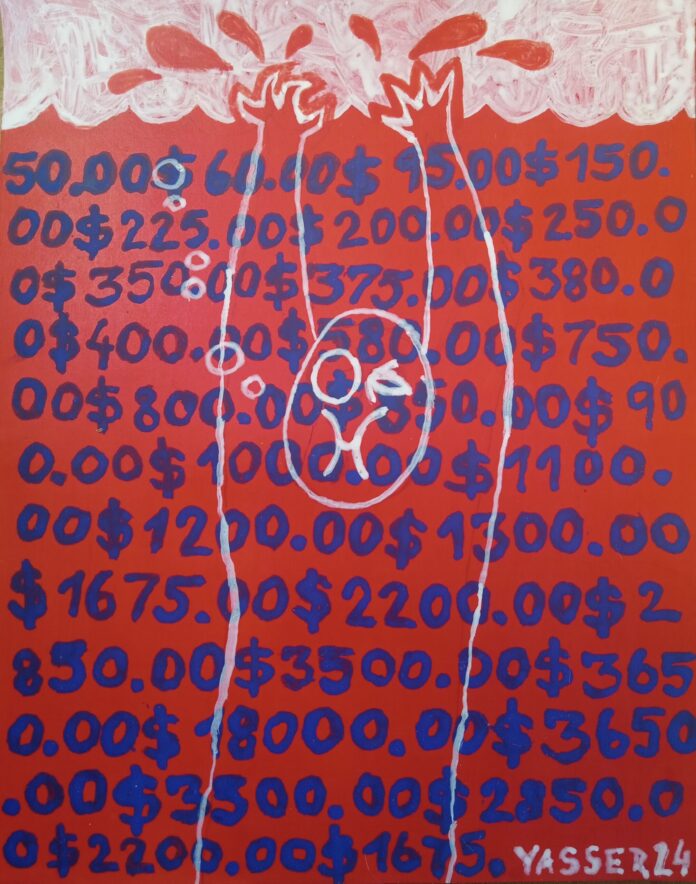
By Veronica Vega
HAVANA TIMES – “Do you want to eat, or do you want to buy the jeans?” I overheard a woman ask her teenage son.
What a difficult choice! Because you can’t live without eating, but for a young person, even in this environment of omnipresent decay, vanity is the cement of your identity, an inevitable process of personal searching.
For years now, my wardrobe has been made up of items given me by relatives or friends who are leaving the country. The last time I had the opportunity to buy clothing, to choose something according to my taste, was in 2019, and outside of Cuba.
I don’t even remember what it felt like to visit the shops in Havana. After they eliminated the CUC – the local form of hard currency – what should have been a solution to the dual currencies became instead a true chaos.
There are now four types of money circulating: Cuban pesos, Euros, the dollar and the “magnetic” dollar, known as the MLC.
Inflation has reached hallucinatory levels. It’s impossible for common Cubans to buy anything more than basic food, of the kind strictly necessary to keep the body going. Just the body, like an automaton, without hopes or dreams.
Could that be the reason that some spend more on alcohol than on food, and others on the famous “chemical” [a cheap synthetic drug that has inundated Cuba]. You have to escape somehow.
A friend, alarmed, remarked that the rain is seeping into her apartment in Alamar, and for the 100 meters of roofing paper she needs to fix it, they’re charging – $1,250 dollars! With two thousand dollars more you can buy an entire apartment here, including everything inside. Those are the prices the Cubans filling the ranks of the national stampede are charging for them.
The real estate market is the only place where prices have fallen, in a reality where desperation makes relative the value of every object, be it ephemeral or good for a lifetime.
The data hits you wherever you go. Putting food on the table has become a nightmare that absorbs all our strength. Meanwhile, if the walls crack, a bulb burns out; if you have a serious blockage in the bathroom pipes; if your shoes sprout holes in the course of your daily travels, forget it, just keep going and be grateful if at least you have something in your stomach.
It doesn’t matter if it’s not exactly what you wanted to eat, or if it’s not exactly the healthiest food. The urgent thing is to keep going – not towards a future that’s become an abstraction, but onwards to the next day that will be just as implacable as today.
I run into friends I haven’t seen for a while, and I’m always surprised at their vestiges of wear, of tiredness. Who can calculate the weight of this desperation that, like the air, invades everything?
Many feel guilty for not having emigrated. For not being able to do so now. Even though it’s obvious that we can’t all just let go of the things we’re responsible for – our sick children, or parents.
Circumstances that tie us down like living fibers, which if cut would drain our blood. At any rate, there are so many elderly people that the impossibility looms before our eyes.
The number of abandoned pets also grows, like those absurd figures on the blackboards of the regular markets and the “Mypimes” – those supposedly “private” establishments that represent yet another bizarre solution to a reality so dysfunctional it already borders on insanity.
A 2-kilo (4.4 lb.) package of rice costs 600 Cuban pesos, as does an equal-sized bag of beans. Ten rolls that are neither fresh nor large cost 200 pesos. The pound of rice that before the pandemic could be obtained for 4 pesos at the nearest state market, now costs 230 pesos in the farmers’ market. Most monthly salaries range from 2,000 to 4,000 pesos, and many of those on pensions receive only 1,500 pesos, or slightly more.
As if we were being battered by a silent war, we anxiously observe the havoc of dysfunctionality: collapsed houses and streets; archipelagos of garbage; filthy water overflowing; ever scarcer public transport; with the people crowded together, irritated and ever more careworn.
And it’s impossible not to wonder when and how any movement will ever reemerge from this system so completely clogged up by blindness and arrogance. Meanwhile, the world continues the rhythms imposed by history. A rhythm of highways full of traffic, high-speed trains, metros, Uber; of multitudes that swarm amidst skyscrapers, on clean streets. With problems, yes, but with options. With daily challenges, but ones that have solutions.
Not like the alternatives that now make an appearance here – stoves that burn firewood, or even sawdust, to compensate for the deficient supply of propane gas.
Until where? Until when?
Our individual mechanisms for physical or psychological survival aren’t unlimited.
And social reality itself has limits, borders, that can’t indefinitely contain the shortages, the injustice and the sadness.
Read more from the diary of Veronica Vega here.




